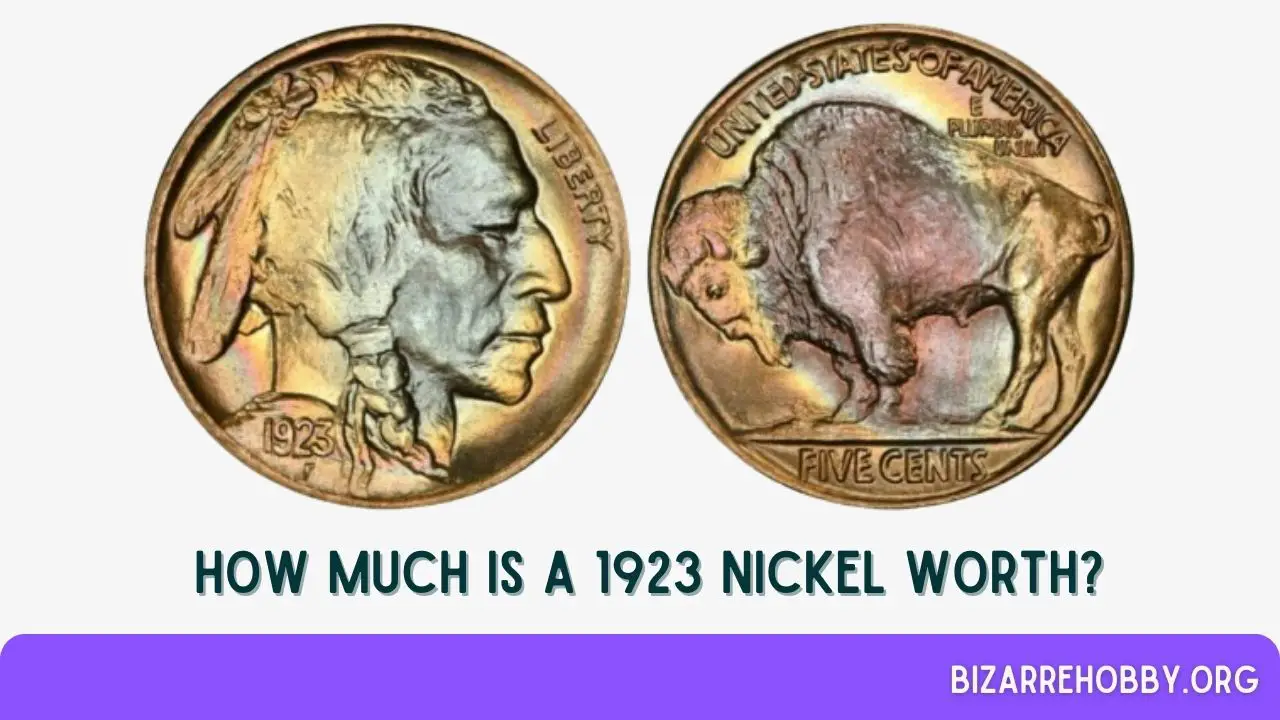The Buffalo nickel, minted by the US Mint from 1913 to 1938, stands out as one of the most collectible American coins due to its captivating design. Often referred to as Indian Head nickels, these coins feature an obverse design that honors Native American heritage.
In 1923, Buffalo nickels were produced at two different mints, with a combined mintage of nearly 42 million coins.
However, one mint had a significantly lower output, making those coins rarer and more valuable today. The mint mark, along with the coin’s condition, plays a crucial role in determining the value of a 1923 Buffalo nickel.
Table of Contents
- Value Chart for 1923 Buffalo Nickel
- Historical Significance of the 1923 Buffalo Nickel
- Types of 1923 Buffalo nickel
- Design of the 1923 Buffalo Nickel
- Grading Guide for 1923 Buffalo Nickel
- 1923 Buffalo Nickel Value Guides
- Rare 1923 Buffalo Nickel Errors List
- Where to Sell Your 1923 Buffalo Nickel?
- What to look out for in 1923 Buffalo Nickel?
- What is the priciest Buffalo nickel?
- FAQs on 1923 Buffalo Nickel Value
- Final Thoughts
Value Chart for 1923 Buffalo Nickel
| Condition | 1923 Nickel | 1923 S Nickel |
|---|---|---|
| Good | $3 | $10 |
| Very good | $5 | $17 |
| Fine | $8 | $40 |
| Very fine | $10 | $100 |
| Extra fine | $20 | $260 |
| AU | $40 | $350 |
| MS 60 | $87 | $700 |
| MS 63 | $235 | $1,100 |
Historical Significance of the 1923 Buffalo Nickel
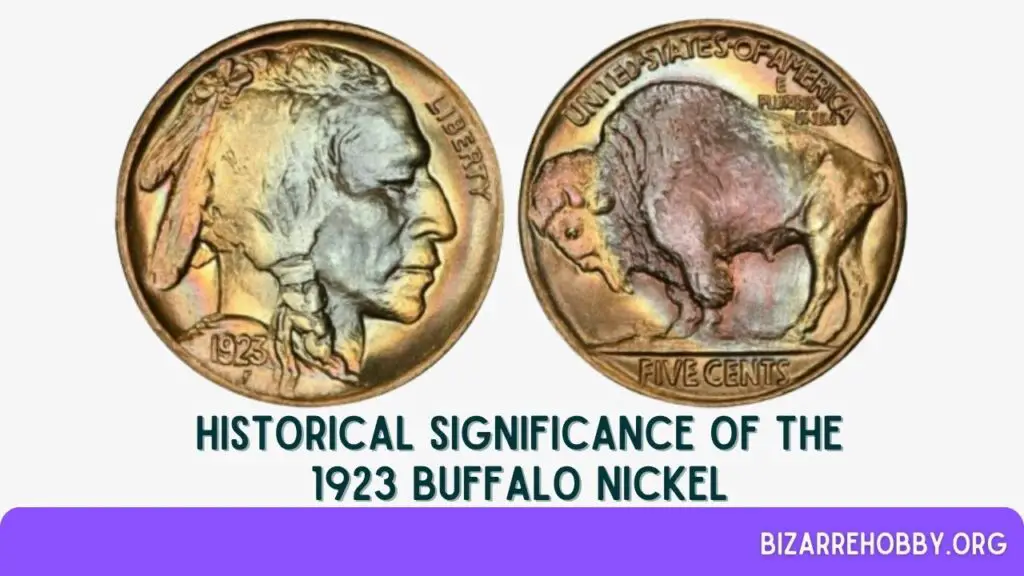
Buffalo nickels were minted for a relatively short period, with a total production of over 1.2 billion coins from 1913 to 1938. This era marked a renaissance in American coinage design.
In 1904, President Theodore Roosevelt initiated a campaign to enhance the artistic quality of American coinage. He commissioned renowned sculptor Augustus Saint-Gaudens to redesign several coin types.
Unfortunately, Saint-Gaudens passed away before he could redesign the Liberty Head nickel. The task then fell to James Earle Fraser, a US Mint engraver.
Fraser’s design aimed to pay homage to Native American culture. The obverse of the nickel features a composite portrait of three Native American chiefs from the Cheyenne, Seneca, and Sioux tribes.
The first unofficial appearance of the Buffalo nickel was at the groundbreaking ceremony for the National American Indian Memorial. President William Howard Taft presented forty new coins to the attending Indian chiefs. However, the monument was never constructed.
Types of 1923 Buffalo nickel
| Location | Year | Minted |
|---|---|---|
| Philadelphia | 1923 nickel | 35,715,000 |
| San Francisco | 1923 S nickel | 6,142,000 |
| Total | – | 41,857,000 |
Design of the 1923 Buffalo Nickel
The Buffalo nickel was issued for only 25 years, and its intricate design posed significant challenges for minting, leading to noticeable wear over time. As a result, finding well-preserved 1923 Buffalo nickels with clear details can be difficult.
Obverse Design of 1923 Buffalo Nickel
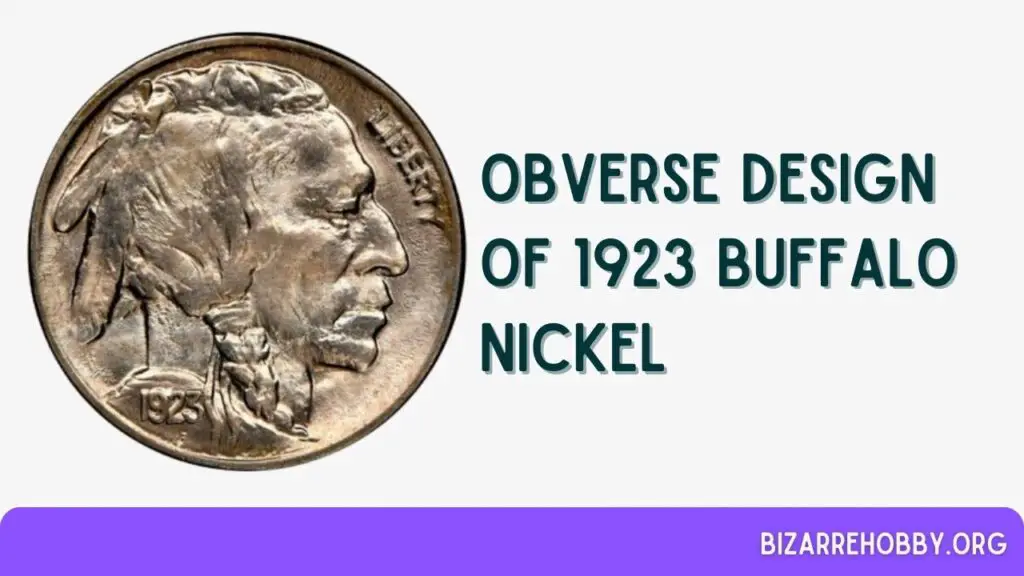
The obverse of the 1923 Buffalo nickel features a right-facing bust of an Indian chief. This image is not based on a single individual but is a composite of three chiefs from different tribes, highlighting features such as prominent cheekbones, detailed hair texture, and a feathered headdress.
The word “LIBERTY” is inscribed along the right rim, ahead of the chief’s face. The minting date and the designer’s initials are located on the lower-left corner, on the Indian’s shoulder.
Reverse Design of 1923 Buffalo Nickel
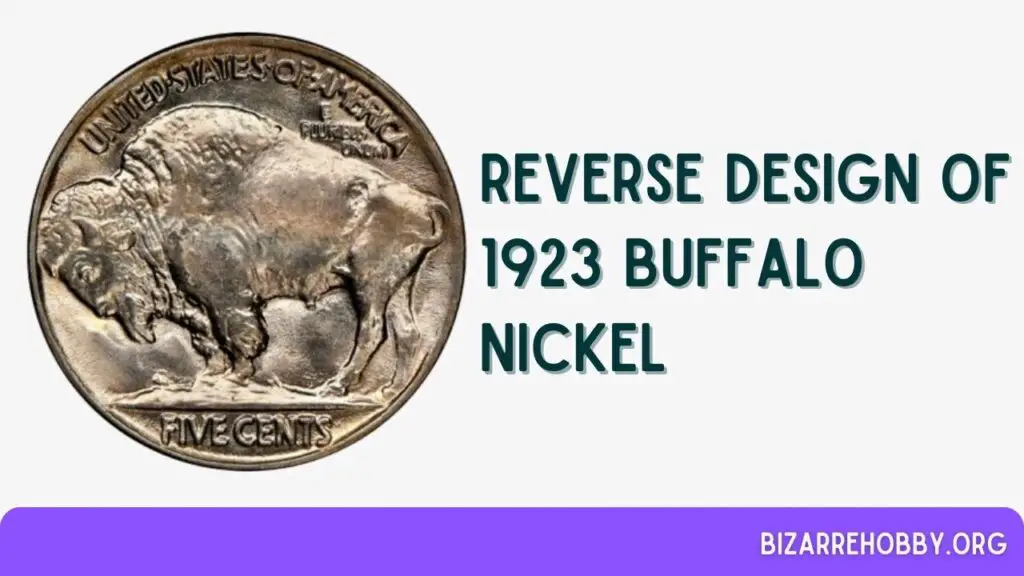
The reverse side of the coin depicts a calm American buffalo standing on a mound. While there is no official confirmation, it is believed that Fraser’s model for the buffalo was Black Diamond, a popular animal from the Central Park Zoo.
Standard inscriptions on the reverse include “UNITED STATES OF AMERICA” along the upper rim and “E PLURIBUS UNUM” below it on the right side. The denomination “FIVE CENTS” is displayed on the lower rim, along with the mint mark on coins produced in San Francisco.
Technical Specifications of 1923 Buffalo Nickel
| Specification | Detail |
|---|---|
| Face value | Five cents ($0.05) |
| Shape | Round |
| Edge | Plain |
| Compound | 75% copper and 25% nickel |
| Coin Diameter | 0.83465 inches (21.2 millimeters) |
| Coin Weight | 0.17637 oz (5 g) |
| Coin Thickness | 0.07677 inches (1.95 millimeters) |
Grading Guide for 1923 Buffalo Nickel
When considering adding a 1923 Buffalo nickel to your collection, the coin’s condition is paramount. Grading is the best way to assess each piece’s preservation level.
For valuable nickels, it is advisable to have them professionally graded. Experts use established grading standards, primarily based on numismatist William Sheldon’s scale.
| Sheldon Scale | Grade |
|---|---|
| 1 | Basal State-1 |
| 2 | Fair |
| 3 | Very Fair |
| 4, 5, 6 | Good |
| 7, 8, 10 | Very Good |
| 12, 15 | Fine |
| 20, 30 | Very Fine |
| 40 | Extremely Fine |
| 50 | About Uncirculated |
| 60 | Mint State |
| 65 | Mint State |
| 70 | Mint State |
Refer to our Buffalo Nickel Grading Guide to understand your coin’s grade. This step is essential to accurately determine your coin’s value.
1923 Buffalo Nickel Value Guides
In 1923, the US Mint produced 41,857,000 Buffalo nickels, a relatively low mintage, especially considering no nickels were minted in 1922. The 1921 mintage was also low, at about 12 million coins.
1923 Buffalo No Mint Mark nickel Value
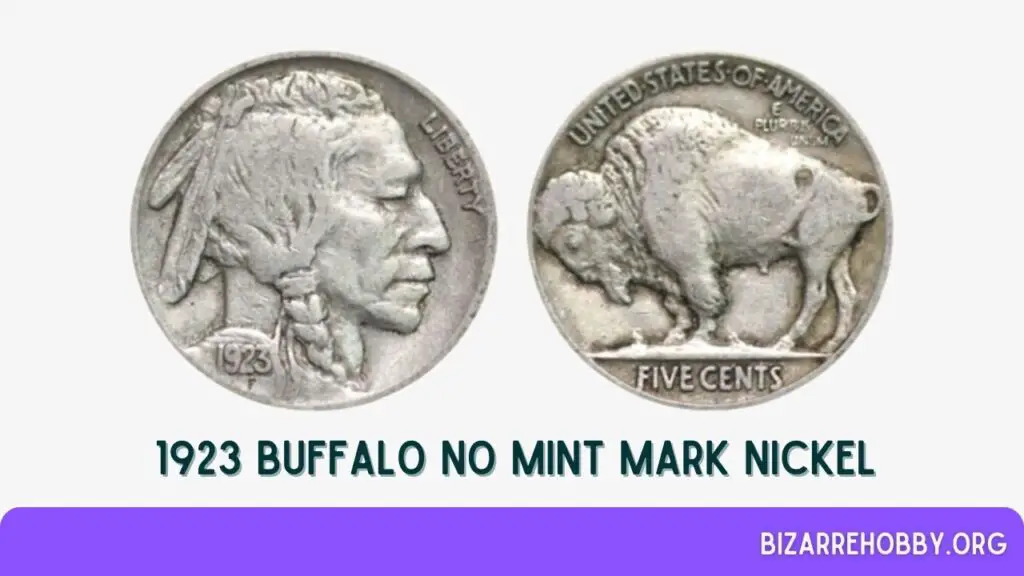
The Philadelphia mint produced the majority of Buffalo nickels in 1923, with 35,715,000 coins lacking a mint mark. These coins were released into circulation, resulting in most showing significant wear today.
Despite this wear, even poorly preserved 1923 Buffalo nickels are worth more than their face value, typically ranging from $0.65 to $0.78. Coins in grades from GOOD to AU can fetch between $3 and $40. Mint state coins are rare and valuable, with prices as follows:
- MS 60: $87
- MS 61: $105
- MS 62: $160
- MS 63: $235
- MS 64: $360
- MS 65: $650
- MS 66: $1,250
- MS 67: $6,000
The highest price recorded for a 1923 MS 67 nickel was $18,400 at an auction in 2003.
1923 S Buffalo nickel Value
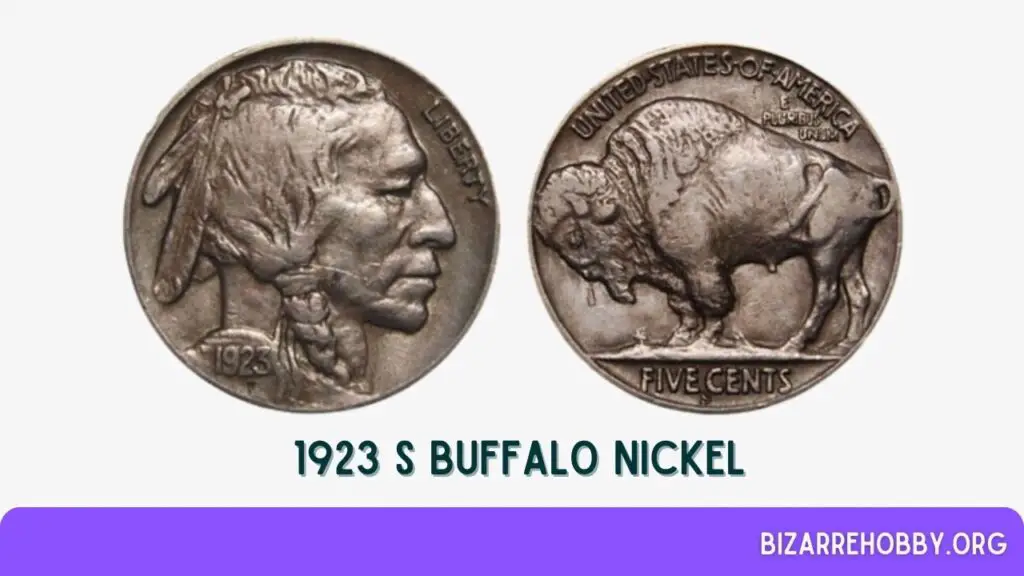
Of the nearly 42 million Buffalo nickels minted in 1923, the San Francisco mint produced only 6,142,000 coins, all bearing the “S” mint mark.
This low mintage makes these coins rare and valuable. Even in poor condition, they can be worth $2.50 to $3. Coins graded between GOOD and AU can range from $10 to $350.
Mint state 1923 S nickels are particularly valuable:
- MS 60: $700
- MS 61: $750
- MS 62: $900
- MS 63: $1,100
- MS 64: $1,575
- MS 65: $5,250
MS 66-graded coins are exceptionally rare, valued at around $47,500. One such coin sold for an astounding $67,563 at an auction in 2013, making it the highest-priced in the set.
Rare 1923 Buffalo Nickel Errors List
Errors on coins are not uncommon, but for collectors to value such irregularities, they must occur during the production process. Coins with these imperfections often fetch higher prices than their regular counterparts due to their uniqueness.
Some collectors specifically seek out these flawed specimens. The most notable error in the 1923 Buffalo nickels is the Two Feathers error, though other imperfections also exist.
1923 Buffalo Nickel Two Feathers Error
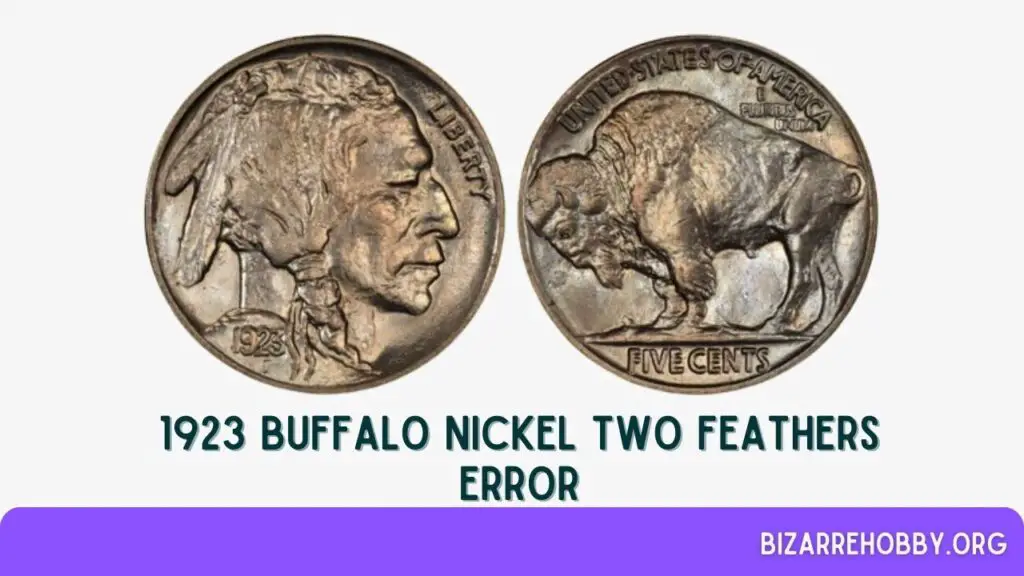
The Two Feathers error is a common anomaly in the Buffalo nickel series, including the 1923 coins. Typically, the obverse design features an Indian chief with three feathers in his hair.
However, some coins from 1923 display only two visible feathers, with the feather closest to the neck missing. This error is believed to result from excessive die polishing, which caused the third feather to disappear.
Despite its uniqueness, the Two Feathers error does not attract significant interest from collectors, and its value largely depends on the coin’s condition.
1923 Buffalo Nickel Off-center Error
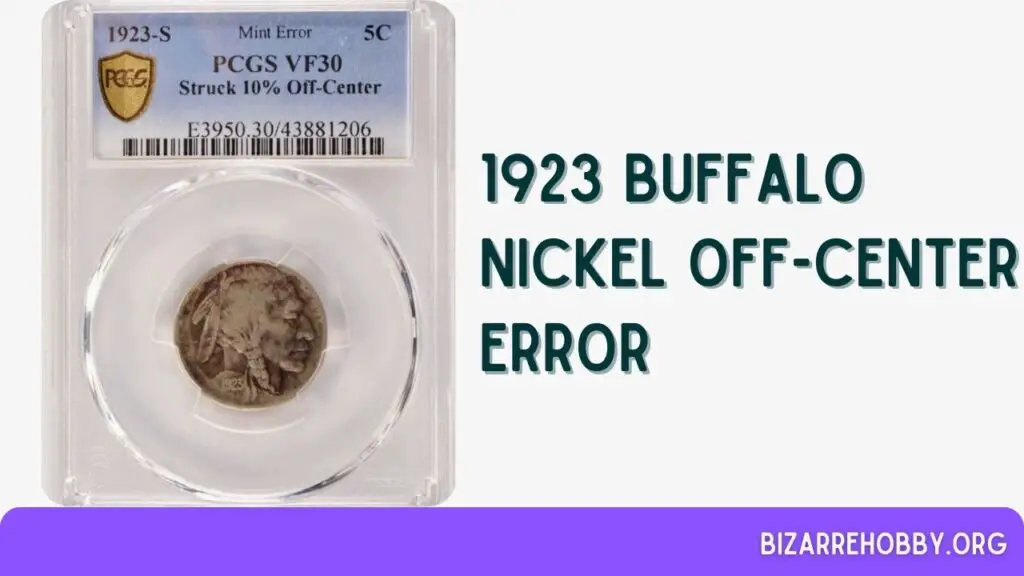
An off-center error occurs when the planchet shifts during minting, resulting in an incomplete design. The extent of the design missing can range from 1% to 99%. The value of these coins depends on the visibility of the design and the presence of the date and mint mark.
A 1923 Buffalo nickel with this error can be valued between $360 and $500, depending on the error’s size and the visibility of key details.
1923 Buffalo Nickel Ragged end clip error
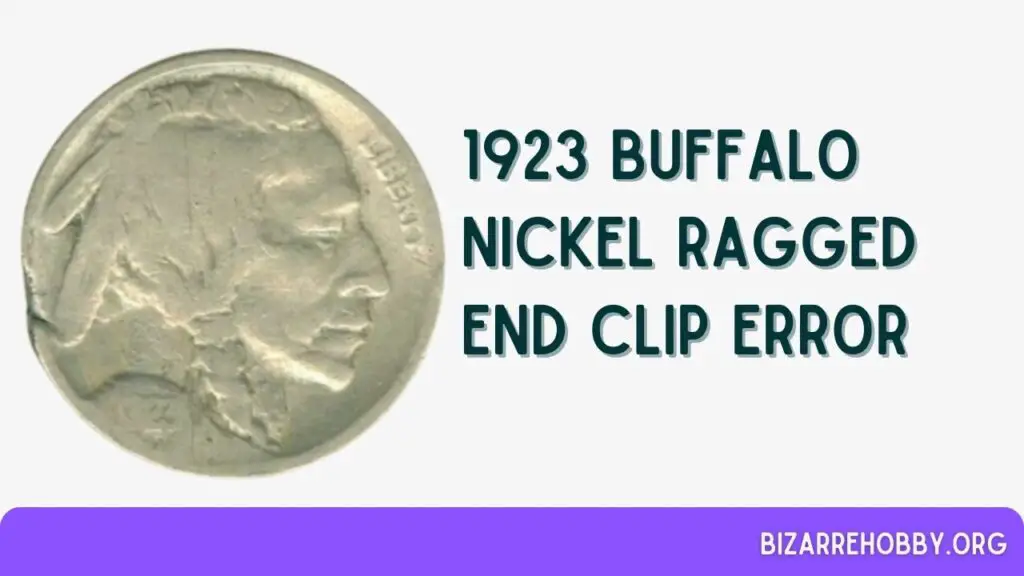
This error is characterized by an irregular edge interrupting the coin’s circular outline, making it easy to spot. The 1923 Buffalo nickels with this imperfection can range in value from $20 to $300, depending on the extent of the error.
1923 Buffalo Nickel Lamination Error
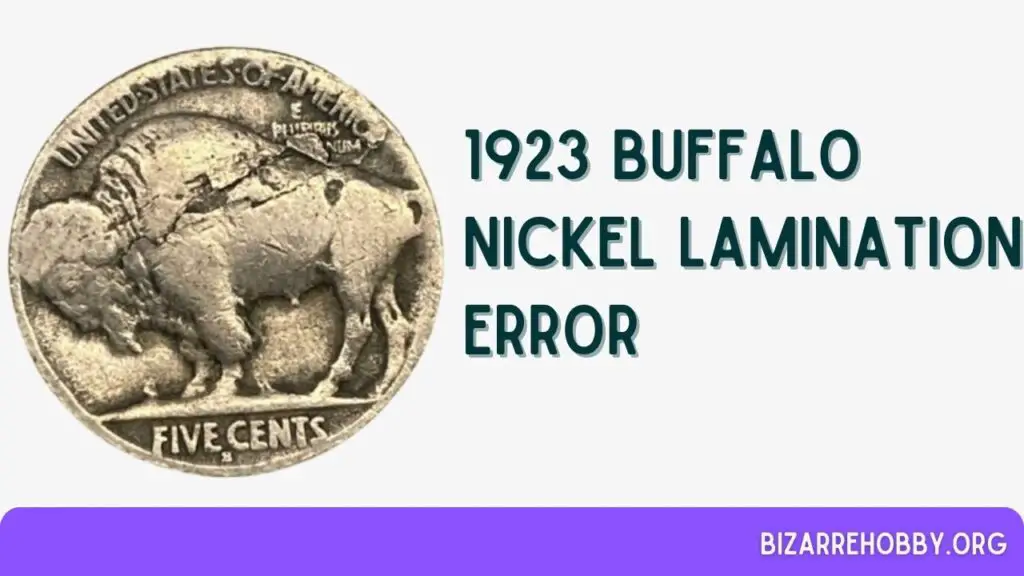
Lamination errors occur when contaminants in the alloy cause the metal to separate, leading to a cracked and peeling surface. Buffalo nickels from 1923 with this error are valued between $150 and $230.
1923 Buffalo nickel with missing designer’s initials
The obverse of the Buffalo nickel includes the designer’s initials below the minting year. Coins missing the letter “F” in the design are more valuable and can fetch up to $270.
Where to Sell Your 1923 Buffalo Nickel?
Knowing the value of your 1923 Buffalo nickel is just the first step. Selling it online can be convenient, and several platforms can help you reach potential buyers. Here are some recommended sites, along with their pros and cons:
- eBay: Widely used, large audience, but fees can be high.
- Heritage Auctions: Trusted auction house, but may require a commission.
- GreatCollections: Specializes in coins, but may have listing fees.
What to look out for in 1923 Buffalo Nickel?
When evaluating a 1923 Buffalo nickel, several key factors can significantly impact its value and desirability:
Condition and Grading
The coin’s condition is paramount. Look for coins with minimal wear, clear details, and no significant damage. Coins graded by professional services using the Sheldon scale can provide a reliable assessment of their condition. Higher grades, such as MS (Mint State), indicate better preservation and higher value.
Mint Mark
Check for the presence of a mint mark. The 1923 Buffalo nickels were minted in Philadelphia (no mint mark) and San Francisco (S mint mark). Coins from the San Francisco mint are rarer and generally more valuable.
Errors and Varieties
Errors can add significant value to a coin. Look for common errors such as the Two Feathers error, off-center strikes, ragged end clips, lamination errors, and missing designer’s initials. These imperfections can make a coin more unique and desirable to collectors.
Historical Significance
Understanding the historical context of the 1923 Buffalo nickel can also enhance its appeal. This coin is part of a series that pays tribute to Native American heritage and American wildlife, making it a culturally significant piece.
What is the priciest Buffalo nickel?
The most expensive Buffalo nickel is the 1918/7 D MS 65 error piece, which sold for $350,750 in 2006. Other high-value nickels include:
- 1926 S MS 66: $322,000 (2008)
- 1916 MS 64 with DDO error: $281,750 (2004)
- 1913 D MS 68 Type 2: $143,750 (2008)
- 1917 S MS 67 and 1920 D MS 67: $138,000 (2008)
- 1918 S MS 66: $125,350 (2008)
- 1924 S MS 66+: $105,750 (2016)
- 1935 MS 65 with DDR error: $104,650 (2007)
FAQs on 1923 Buffalo Nickel Value
What makes a 1923 Buffalo nickel rare?
The 1923 Buffalo nickels are a century old, with a relatively low mintage of just under 42 million. Their design was prone to wear, making well-preserved examples rare and valuable.
Which 1923 Buffalo nickel is worth a lot of money?
1923 S MS 66 and MS 67 Nickels are worth a lot of money. The 1923 S MS 66 Buffalo nickel sold for $67,563 in 2013. Similarly, the 1923 MS 67 Buffalo nickel sold for $18,400 in 2003.
How much are the 1923 (Philadelphia) Buffalo nickels worth?
Philadelphia minted nearly 36 million Buffalo nickels in 1923. Even in poor condition, these coins are worth more than their face value, typically around $0.65. Mint state specimens can range from $55 to $6,000, depending on their grade.
Final Thoughts
The 1923 Buffalo nickel is a fascinating piece of American numismatic history. Its unique design, historical significance, and potential for rare errors make it a prized addition to any collection.
Whether you are a seasoned collector or a novice, understanding what to look for in these coins can help you make informed decisions and appreciate the rich history they represent.
Always consider professional grading and stay informed about market trends to maximize the value of your collection.
